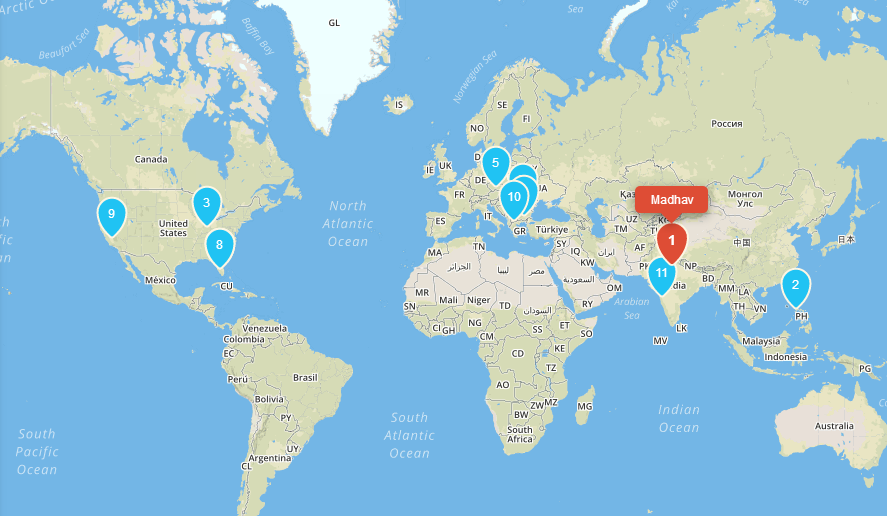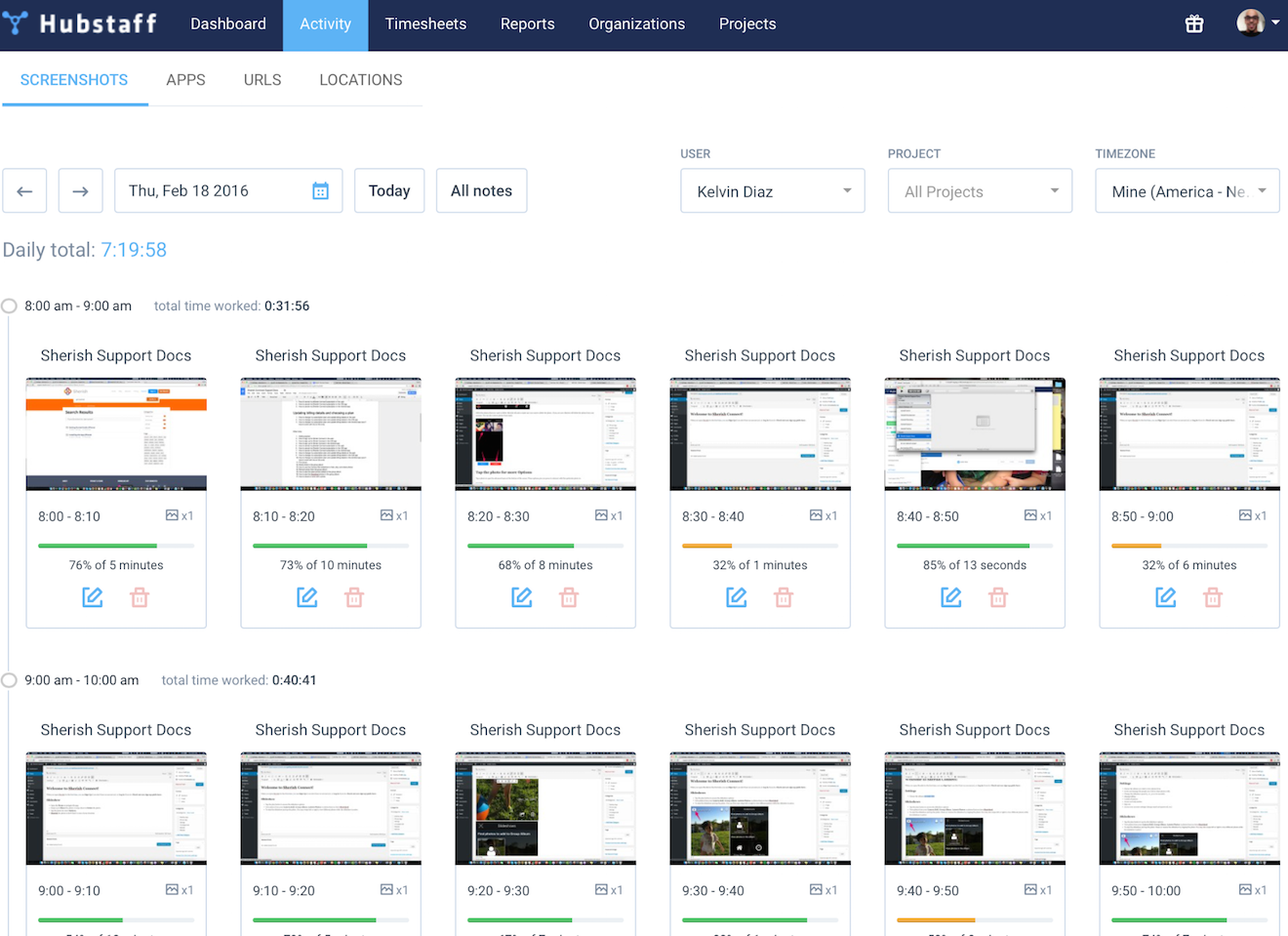Achieving Hypergrowth With a Team I’ve Never Met in Person
An inside look at how Hubstaff has scaled their remote team

There has been an awakening… have you felt it?
It’s happening right now. We’re in the early stages of a remote work revolution, and in the next few years, we expect to see a majority of the workforce working remotely.
There are companies being built across the world where the employees haven’t ever met each other in person. Beautiful to see the impact of technology in such a powerful way, isn’t it?
One such company is Hubstaff — and I’m part of the Hubstaff team. What is Hubstaff, you ask? It’s time tracking software for remote teams. It enables you to track time with useful productivity metrics of their team so you can manage them effectively.
(And we integrate with Redbooth so that you can know more about your team’s work habits and what they’re working on right now.)
Hubstaff is more than software, though. It’s also an incredible group of 26 team members across the world. We all work remotely.
And in this post, I’m going to take you behind the scenes to see how we do it.
Growing our remote team by 3x
Our co-founder Dave made it clear early on that a primary reason for building Hubstaff was to give more people the freedom to work where and when we want.
That’s why freedom is a core value at Hubstaff. It’s the very first one on the list.
That’s also why our team is 100% remote.

Now, remote work is great for both employees and employers. Employees save on commute time, can have flexible work hours, and experience a variety of other benefits. Meanwhile, employers save on office rent, get access to a wider talent pool, and more.
But there’s a whole new set of challenges when it comes to managing a remote team. It’s not like a traditional in-office team.
You need to hire the right remote workers, manage their tasks efficiently and deal with employees in multiple time zones. It’s not pretty if you’re not careful.
But if you’re spending the majority of your time delegating tasks and managing your remote team, how will you find time to work on the critical areas for your business’s growth?
Besides, managing 24-7 isn’t the freedom you originally set out for. That is not what you want.
What you want is a system designed to make sure that work gets done without your intervention — so you can focus on growing your business.
Just like you, we were in the same spot. We made the mistakes, we learned and slowly refined our processes after working with multiple remote workers.
Today, I’m going to give you an inside view of how our team works and hopefully share some actionable steps so you can implement them in your business today.
With this system, we have been able to grow our all-star remote team from 8 to 26 in the last 18 months.
In the very same time period, we have also grown from $250,000 to $1.2M in annual recurring revenue and we are 100% bootstrapped.
Let’s dive in.

Belief in transparency
First of all, we believe in transparency across our entire business. We are transparent with our revenue metrics and growth strategies. Even our business model is built around work data transparency.
By work data transparency, I mean that all our internal project management tasks, communication, and time data is accessible to all team members.
While tracking time of tasks, our software takes random screenshots of each team member’s screen and monitors their productivity levels (via keyboard/mouse activity levels). This data automatically gets uploaded to the company dashboard on Hubstaff.
So why exactly do we believe in this radical degree of transparency across our organization?
- It keeps us accountable, since everything is public
- It increases trust
- It means we waste less time clarifying what’s been done
Here is how the making our work data transparent benefited us:
1. Assessing accountability of a new remote hire
As our team size grew 3x in the last year, our management had to sort through a ton of applications. The key qualities we look at when shortlisting new candidates are skill, personality and accountability.
Alex Turnbull gave this great advice on remote workers last year: A great worker isn’t necessarily a great remote worker.
We’ve found this to be very true. That’s also why you can’t hire someone based on just an interview.
There are certain qualities in a potential remote hires that you can only assess once you’ve worked with them. We work with candidates for 2-4 weeks before bringing them on full-time.
While we’re working together with these candidates, we assess the following remote worker traits:
Self-motivated and accountable
Has the ability to complete work at home without constant reminders.
Super-communicative
Understands the increased need for ongoing/open communication at every phase. We use team chat & project management tools that integrate with Hubstaff (like Redbooth) to manage all task communication.
Organized
Prioritizes and focuses, even with the many distractions at home. We observe this by giving them a 2-4 week goal which we mutually agree on. It could be as simple as 4 tasks. For example:
- Build one data-driven post
- Work with designer to get images built for the post
- Suggest improvements to our user onboarding process
- Implement the changes suggested
Over the next few weeks, the team member may face time zone challenges, unexpected roadblocks, distractions and delays. You need to observe how they manage these issues and execute their tasks by the end of the trial period.
Based on the results from our above criteria and the data from Hubstaff, we filter out the best candidates for our team.
We’ve found that implementing Hubstaff does help spike a team member’s productivity. I’ve personally observed that the “awareness” of productivity levels being tracked makes you aware of the time being wasted and thus, makes you more productive.
2. For checking progress on a task when a team member isn’t available
In a 100% remote team, you’re working with people in different time zones ALL the time.
We’re spread all over the world (8 countries currently: the United States, India, the Philippines, the Czech Republic, Romania, Bulgaria, Turkey and Brazil).
The good news is that there is always someone to talk to at any time of the day.
The bad news is that collaboration can be hard, as you might have to wait for 12 hours to get an answer from a team member on something, which in turn can lead to bottlenecks. That’s where our screenshots help us out.
When we need to get details on the progress of a project and the team member isn’t around to answer our questions, we just look at their screenshots to understand what work was done.
Instead of emailing them and waiting till they wake up to reply, we look at their day’s screenshots to get an idea.
Here is an example: If one of our senior developers from the US wanted to see the code that was written the previous night by our team member in India, he can just look at their screenshots to see exactly what was done.

This is especially useful to understand the work behaviors of new remote hires.
We also do daily standups publicly at 9 a.m. EST so everyone on the team can see what everyone else worked on in the last 24 hours — and what they plan to do in the next 24 hours. We also cover whether we’ve faced any impediments and whether we’re on track to our sprint completion.
Answering these questions helps us in planning our weekly sprints more efficiently.
3. Work monitoring reduces management overhead
Our management mainly uses this work data and our software to automate employee payments. This means they can ensure that the work was actually done before sending out the employee payments.
This is important especially when you’re dealing with new remote hires or contractors. We’ve dealt with cases where a new remote hire was working on a different client’s project on our time and billing us for that time.
There’s also a risk when a freelancer or contractor asks for a retainer upfront and then disappears (it doesn’t happen often, but it does happen). Time tracking software with proof of work is very useful in this case, because you can pay the freelancer for the exact time spent.
Lastly, when a team grows, you can imagine the time saved in managing employee payments (not to mention avoiding the headache of keeping a record of employee hours time keeping). It’s all automated.
That said, once you have worked with a certain team member for a considerable amount of time and you know he or she is accountable, I would also advise you to not put absolute focus on productivity metrics and screenshots. In the end, you have to be results-oriented.
These tools can make work updates simpler and productivity levels higher, but you still need your team to stay focused on the end business goal. Our management sets a yearly business goal for our entire team and then all of us align our work priorities towards that business goal using the Theory of Constraints.
Closing notes
This system is pretty effective if you work with a remote team. Today, we have a wonderful team spread across the world that works in unison to grow Hubstaff.
More importantly, we work as a team with an eye on the bigger picture: making remote team management simpler.
We’ve found it to be profoundly helpful to embrace transparency across our entire business.
If I could give you one piece of advice, it would be to do the same.